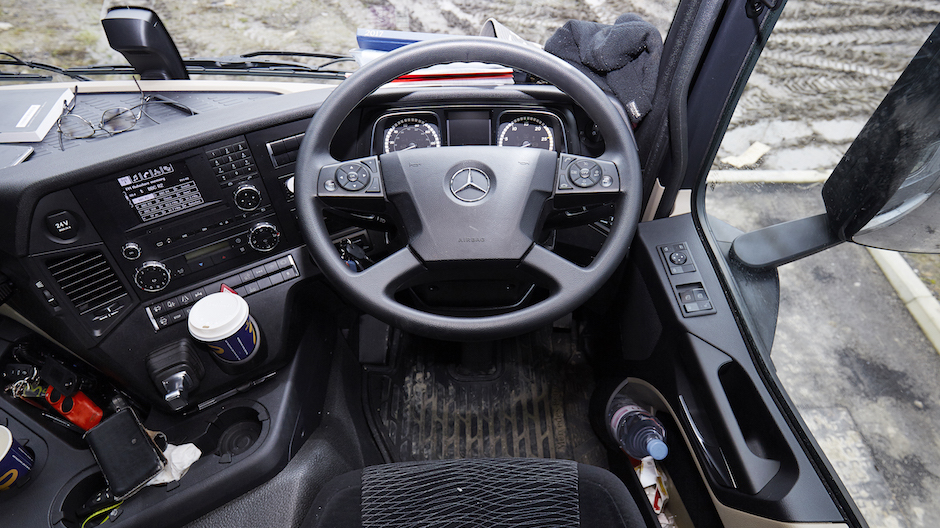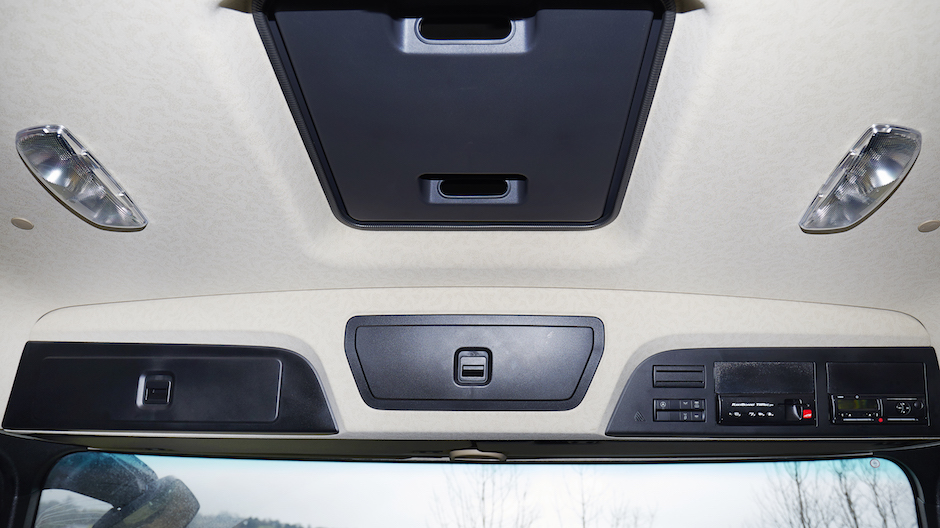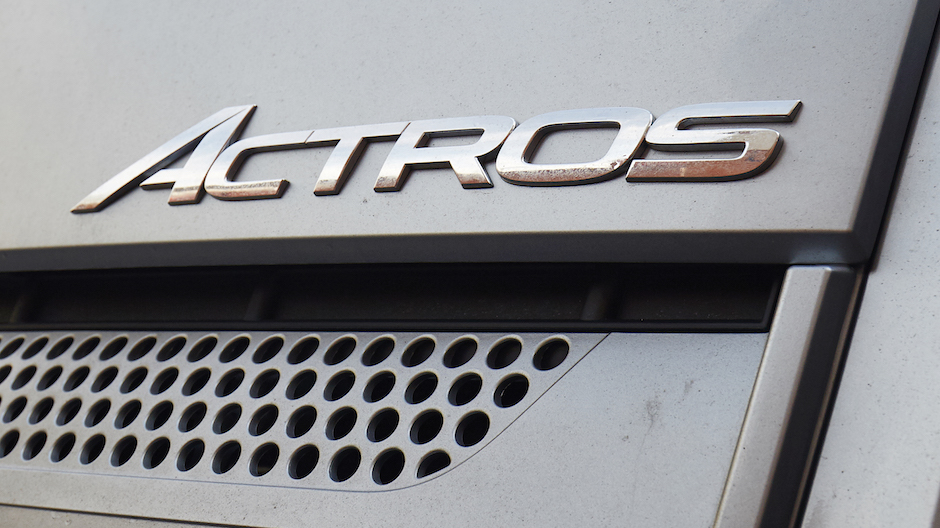
Living with an Actros 2523 Rigid
ACTROS
Bob shares his thoughts on spending nearly 10 days driving a Mercedes-Benz Actros 2532 Rigid.
In the third article in the series from Bob Beech, truck driver and transport journalist, Bob lives with an Actros 2532 rigid for 10 days. After driving for 40 years he has experienced a wide range of trucks throughout his career. Find out what he thought about the Actros 2532 Rigid below.

We recently had the opportunity to spend nearly 10 days driving a Mercedes-Benz Actros 2532 Rigid. We put the truck to work with a local operator who uses a mix of rigid and articulated vehicles in both the UK and Europe. The company uses Mercedes-Benz trucks for a variety of local collection and delivery jobs combined with longer distance operations which often requires drivers to have two or three nights away from home.

Difficult deliveries made easy
The operator is a member of one of the national pallet networks responsible for collecting and delivering palletised goods within its allocated postcode area and overnight trucking to a central Midlands hub. The area covers a large part of Wiltshire and Somerset. This means that deliveries need to be made to a range of areas, including modern towns like Swindon and Chippenham, numerous industrial estates, farms and residential addresses in rural areas. Delivering to houses is the main challenge for many delivery drivers, particularly when working for companies who offer overnight delivery via a pallet network. The tag axle 6X2 Rigid was fitted with the optional hydraulic rear steering axle which definitely makes a big difference when manoeuvring in tight spots, as did the 2300mm wide version of the ClassicSpace L Type sleeper cab.
A truck option for everyone
The current Mercedes-Benz truck cab range is probably the most extensive available from any manufacturer. The Antos and Atego range is aimed at distribution work, with a choice of day cabs, the Arocs range is built for construction and heavy duty operation with day or sleeper cabs, and the Actros range for long distance work and has a range of sleeper cabs available.



More space in a smaller cab
Our lower mounted version had the three step entry and the deeper 320mm engine tunnel, the standard height roof which gives enough room for a single bunk with two storage lockers accessible from the outside. It is aimed at the distribution sector, where the driver might be in and out of the cab many times in a shift, but then sent on occasional longer trips that require nights away. If more space is required, the modular design of the cab range means that the roofline can be raised up by two more stages, creating one of the biggest cabs on the market. Also, the cab width can be taken out to the full 2500mm and the floor raised to give a lower or no engine tunnel.
Quality day driving
It’s certainly easier being closer to the ground when you have to enter and exit the cab numerous times in the course of the day, although our truck had a higher capacity 9.0 tonne front axle to guard against overloads when weight distribution becomes an issue with multiple deliveries. The combination of bigger front springs and 385/65R22.5 super single tyres meant that the front of the truck was a little higher than normal, making the bottom step a bit higher. Lower profile tyres might reduce the step height and lower the platform height of the curtain-side body.
We found the truck fine for normal day work, the driving position is excellent, the vision is very good and the eight-speed power-shift automated gearbox took away all of the effort of driving in built-up areas. The combination of decent steering lock and the hydraulically steered rear tag axle makes a real difference. The truck will turn more sharply than a 6X2 with a fixed tag axle, but you have to keep a close eye on the rear tail swing to begin with. The 320 BHP engine was well up to the task of shifting 26 tonnes and, to be honest, we ran at less than maximum weight for a fair proportion of the time in any case. The ride and handling was good, although the front suspension was considerably smoother with a bit of weight in the body, the brakes worked well and the engine brake was exceptionally effective for a 7.7 litre engine.
Adaptable cab space
Crossing the cab to either get to the passenger side or to access the bunk was not too much of a chore. This particular cab gives a maximum headroom of 1310mm between the seats, which makes standing a little difficult in comparison to the biggest flat floor GigaSpace which has 2130mm of headroom, making getting dressed a simple formality. Our smaller ClassicSpace version required a bit more planning and we found that the best option is to use the extra height in the passenger footwell to stand up, and fold up the passenger seat to create more space.
The bunk was comfortable, the curtains kept out the light and the compact cab kept in a lot more warmth than many bigger versions - just a quick blast of the night heater soon had it nice and warm, even in January. Given a choice we would obviously choose a bigger cab, but the whole experience was quite enjoyable, in a slightly nostalgic fashion.



A nostalgic ride
Our trip got us thinking back to over 30 years ago and the Mercedes-Benz 1633 tractor unit we used to drive in both the UK and Europe, sometimes living in the cab for two or three weeks at a time. The L-type sleeper fitted to the NG/SK ranges was probably very similar in size to the ClassicSpace sleeper. It had two bunks rather than the single one in the modern truck, the top bunk doubled up as extra storage, but there were no exterior lockers and very similar headroom. It was considered perfectly adequate at the time and we really enjoyed driving it - even the hard-wearing, cushioned material on the engine cover of the Actros is very similar to the old truck.




Comment
Please log in to post a comment.
No comments yet